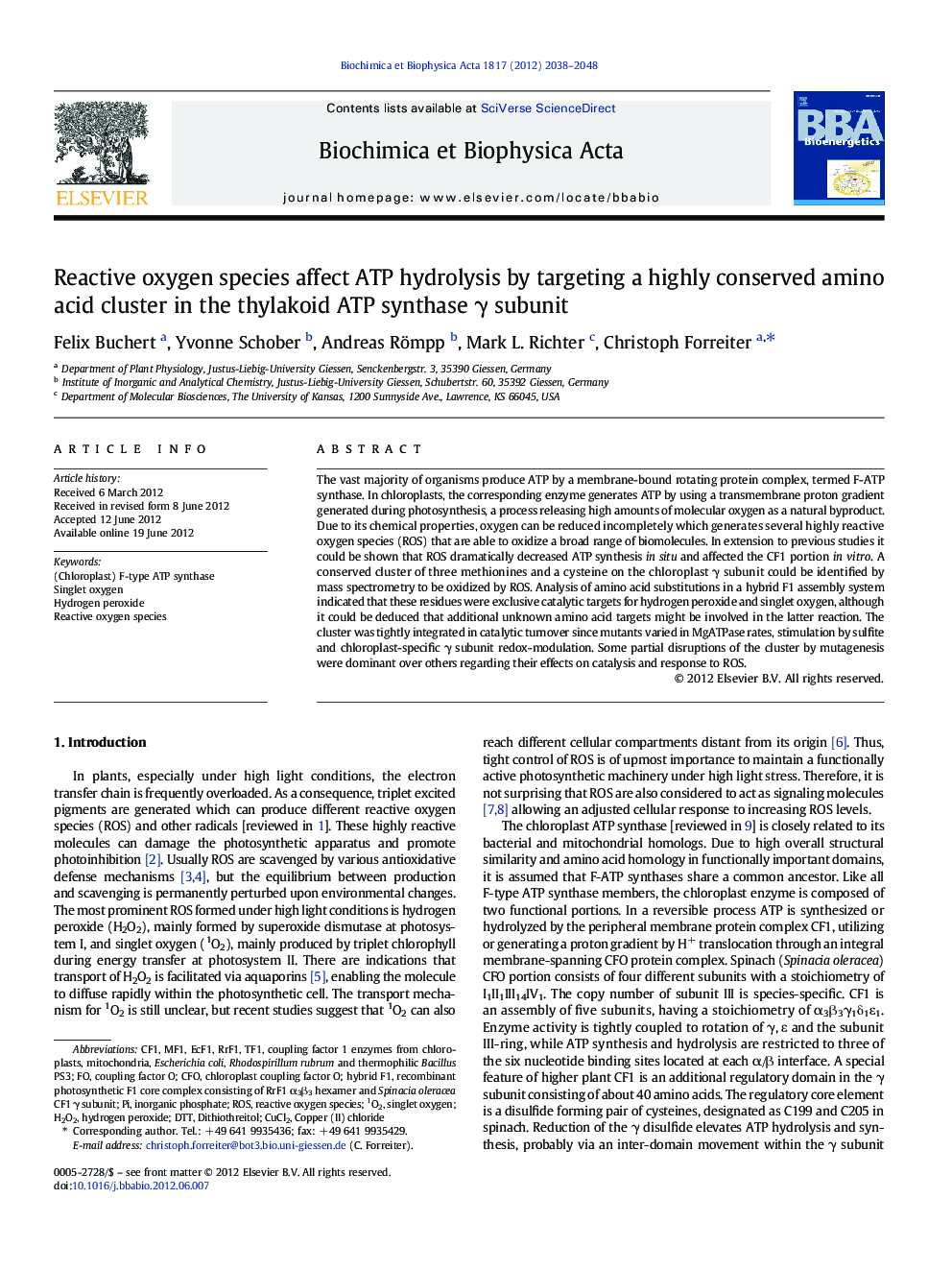| Article ID | Journal | Published Year | Pages | File Type |
|---|---|---|---|---|
| 1942326 | Biochimica et Biophysica Acta (BBA) - Bioenergetics | 2012 | 11 Pages |
The vast majority of organisms produce ATP by a membrane-bound rotating protein complex, termed F-ATP synthase. In chloroplasts, the corresponding enzyme generates ATP by using a transmembrane proton gradient generated during photosynthesis, a process releasing high amounts of molecular oxygen as a natural byproduct. Due to its chemical properties, oxygen can be reduced incompletely which generates several highly reactive oxygen species (ROS) that are able to oxidize a broad range of biomolecules. In extension to previous studies it could be shown that ROS dramatically decreased ATP synthesis in situ and affected the CF1 portion in vitro. A conserved cluster of three methionines and a cysteine on the chloroplast γ subunit could be identified by mass spectrometry to be oxidized by ROS. Analysis of amino acid substitutions in a hybrid F1 assembly system indicated that these residues were exclusive catalytic targets for hydrogen peroxide and singlet oxygen, although it could be deduced that additional unknown amino acid targets might be involved in the latter reaction. The cluster was tightly integrated in catalytic turnover since mutants varied in MgATPase rates, stimulation by sulfite and chloroplast-specific γ subunit redox-modulation. Some partial disruptions of the cluster by mutagenesis were dominant over others regarding their effects on catalysis and response to ROS.
► H2O2 and singlet oxygen affect the chloroplast ATPase, in particular the γ-subunit. ► Main ROS targets are amino acids within a conserved met/cys cluster of the γ-subunit. ► Both ROS have a detrimental effect on the CF1 activity. ► Amino acid substitution resulted in increased tolerance against both ROS types.
